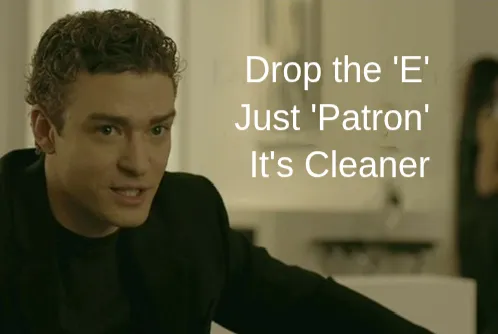
Why Patron, and why now
In 2022, when I was graduating college, I had a clear vision: build a better Patreon for serialized work like podcasts, webcomics, and long-running projects. But timing pulled me in a different direction. ChatGPT had just launched, and the AI boom was creating massive opportunities in search and retrieval. So instead of diving into creator tools, I built Trieve, a retrieval API.
The bet paid off. We ground through 2023 getting our first dozen customers, joined Y Combinator’s Winter 2024 cohort, raised $3.5 million, and two and a half years later, we were acquired.
Now, post-acquisition, I finally have room to return to the Patron idea. The need still feels obvious. I listen to creators on Patreon all the time and hear them occasionally slip up, saying “Patron” when they mean “Patreon”—more often than you’d think. Patron is what people naturally say. It also points to what I think Patreon underserves: a premium, high-touch platform specifically designed for top creators in serialized formats.
What would that look like? Think higher revenue splits, dedicated creator success managers, advanced analytics for understanding subscriber behavior, and tools built specifically for episodic content rather than one-off posts. A platform that treats serialized creators like the media businesses they actually are.
That vision made me wonder: could I secure patron.com and build the platform I actually want to use?
Getting the domain
I navigated to patron.com on my phone and got redirected to world.com. The landing page explained that World Media owned a portfolio of premium one-word domains as investments. The site listed a contact: Gary Millin. The domain wasn’t being used for anything significant—just a basic landing page that looked like it hadn’t been updated in years.
But here’s the thing about premium domains: it’s rarely just about money. Domain holders, especially for valuable one-word .coms, want to see their asset put to good use. They’re looking for the right person with the right vision.
The objective was clear: get in front of Gary and make my case.
I just did things
I put him through a normal outbound sequence: cold emails, LinkedIn Sales Navigator messages, nothing fancy. I kept it professional but persistent, explaining who I was and what I wanted to build. Eventually he replied.
I’m pretty sure credibility helped. YC, building and growing Trieve, and having it acquired signaled I wouldn’t waste his time. Early in Trieve, getting anyone to respond felt impossible. With a successful exit, doors open. People take your emails seriously. It’s easier the second time.
Fly, meet, ask
From there, everything was more straightforward than you’d expect:
- I booked a flight to New Jersey where their office is located
- I met Gary in person and explained the vision
- I presented a detailed 100-day plan covering initial product development, creator onboarding strategy, and revenue projections
- We negotiated terms for the domain
The 100-day plan was crucial. It showed I wasn’t just buying a domain to flip it—I had a concrete roadmap for building something valuable. Gary wanted to see milestones: when I’d launch the beta, how I’d recruit initial creators, what success metrics I was targeting.
We landed on founder-friendly terms: I got the right to use the domain in perpetuity without putting up cash upfront and only have to opt into allocating capital to activate the perpetual lease if the business works. Essentially Gary became an investor in the vision, not just a domain seller.
A couple of weeks later, the domain was transferred, and I started building the site you’re on right now.
Dumb doers beat smart thinkers
The whole experience reminded me of something I’ve noticed: action often beats analysis paralysis. While I was busy sending emails and booking flights, others might have been researching domain acquisition strategies or building elaborate business cases.
Sometimes the thing that seems impossible—like acquiring a premium one-word .com just requires an email, a phone call, a flight, and an honest conversation. The mechanics are straightforward even when the outcome feels unlikely.
If you have an idea or a hunch, try it. There are probably fewer blockers than you think. Spend a little less time planning and a little more time doing.